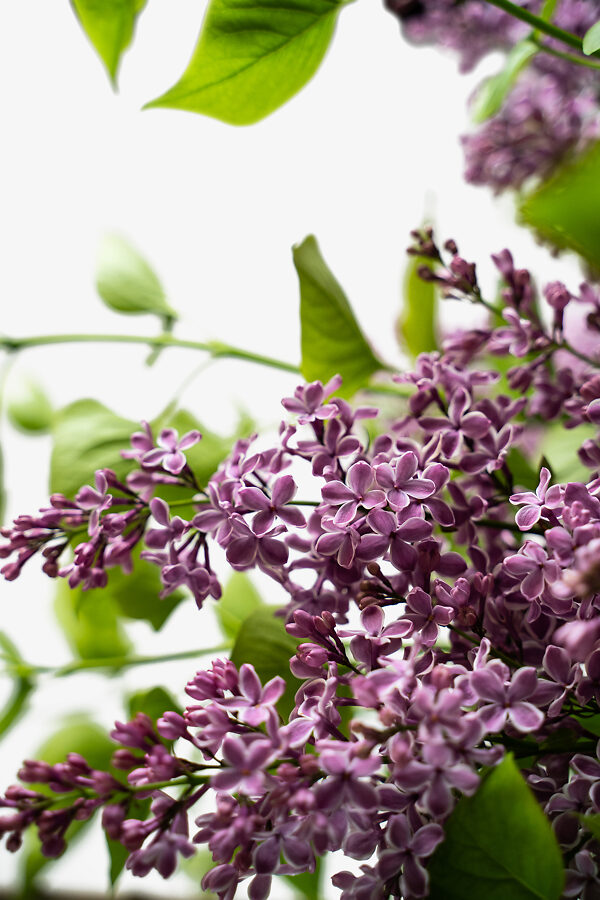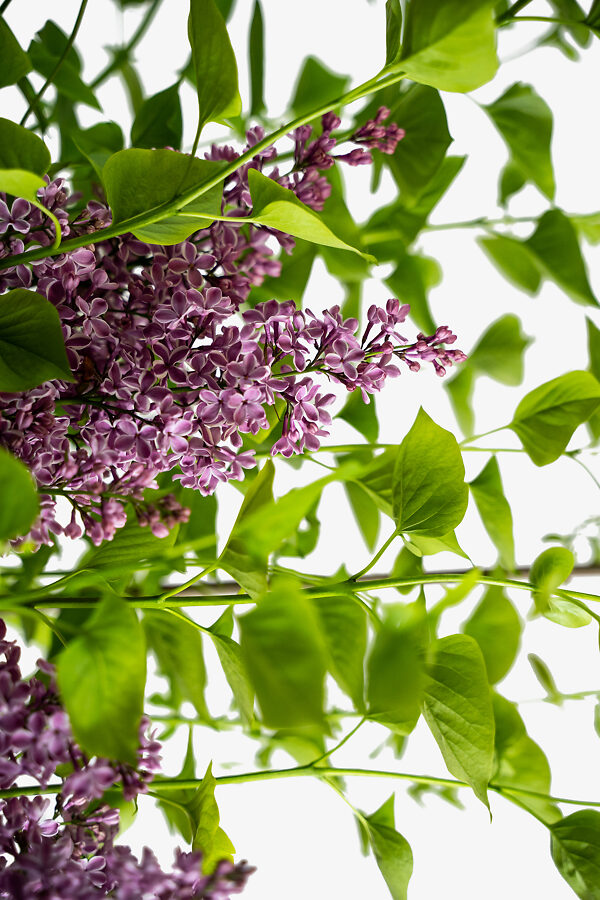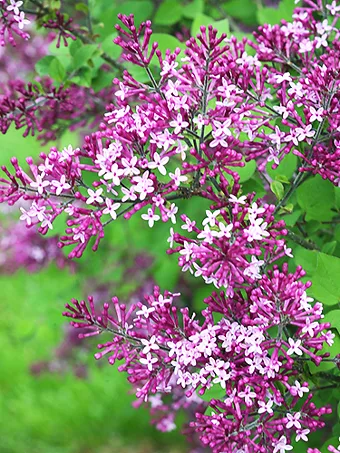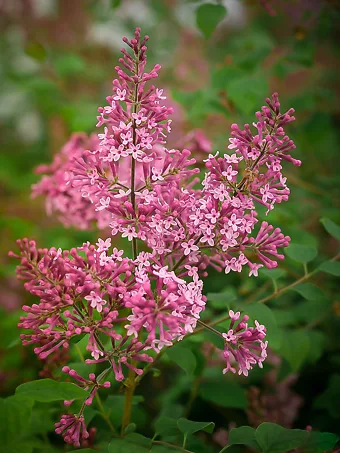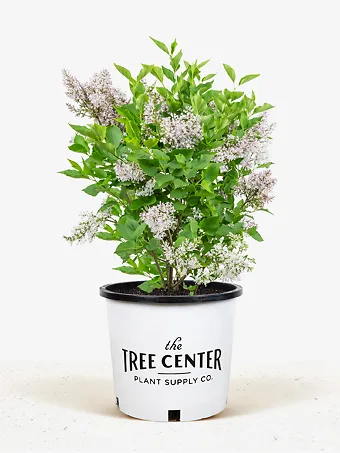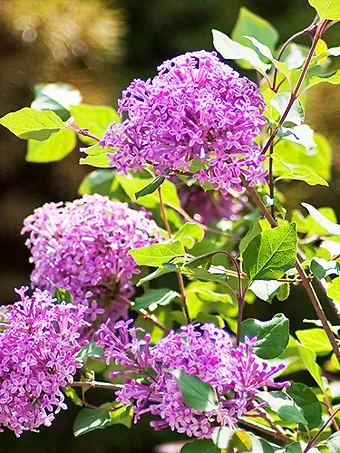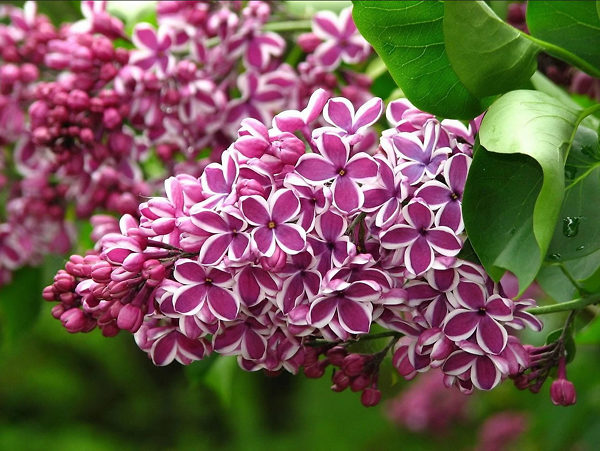
Sensation Lilac
Syringa vulgaris 'Sensation'View more from Lilacs
Sensation Lilac
Syringa vulgaris 'Sensation'
Select Size
30 day - ARRIVE AND THRIVE™ guaranteeLearn more


Special Features

Botanical Name
Syringa vulgaris 'Sensation'
Outdoor Growing zone
3-7
Mature Height
8-12
Mature Width
6-8
Sun needs
Full Sun, Partial Sun
The Sensation Lilac is a unique plant, and the only lilac in existence with two-tone flowers. Carried in big bunches all over the bush, they are rich purple with a white edge, making a bold statement and bringing a completely new look to lilacs, and to your garden. It grows into a medium-sized shrub between 8 and 12 feet tall, spreading into a rounded crown up to 8 feet wide, but usually less. It blooms in spring with richly perfumed blossoms that fill the garden with color and scent. No garden can be without a lilac, and this one is the best there is.
- Unique two-tone flowers of purple with a white edge
- Large flowers clusters are produced in abundance
- To-choice spring flower for cold zones
- Richly perfumed blossoms
- Easily grown, even in urban conditions
Grow the Sensation Lilac in full sun for the most abundant blossoms, although it will also tolerate some partial shade. It thrives even in cold areas, and blooms well in zone 3. It will not grow in very warm areas, as it needs significant winter cold. This bush thrives in almost any soil, including urban soils and rough ground, but whatever the soil, it should be well-drained. Richer soils will give stronger and faster growth, and watering during extended dry periods will be appreciated. It has few significant pests or diseases and some simple pruning after flowering is all the care needed.
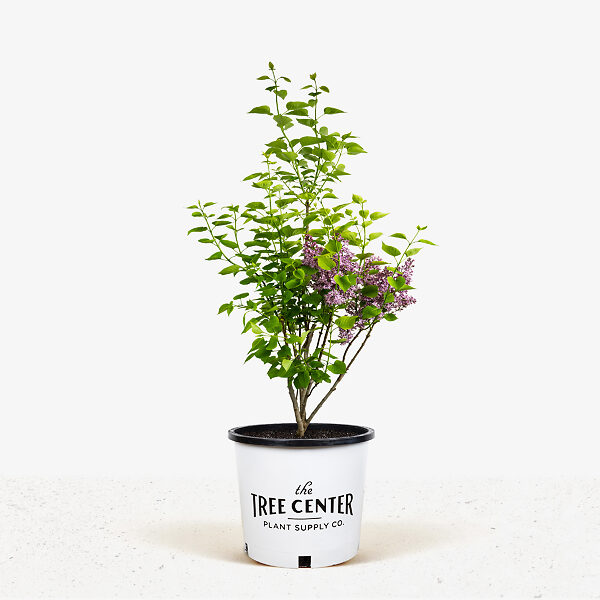
Lilac bushes are essential, especially in colder zones, for their magnificent spring flowering. They come in many colors, and they are easy to grow. Every garden has limited space, so instead of wasting it on inferior plants, always choose the best. With lilacs there are lots to choose from, but for a very different look, the name says it all with the Sensation Lilac. With its unique two-tone flowers this is a stand-out variety with massive impact, and its white and purple blooms really are a sensation.
Growing Sensation Lilac Shrubs
The Sensation Lilac grows into a medium-sized rounded shrub between 8 and 12 feet tall, and about 8 feet across. The heart-shaped leaves are smooth and medium green, between 3 and 6 inches long. This plant has a dense, twiggy structure, with multiple trunks growing from the base, and a rounded crown of leaves. In spring, after the leaves emerge, the flower buds at the ends of the branches begin to swell, and they quickly expand into large, elongated heads, packed with hundreds of fat buds. Up to 12 inches long, these flower heads crowd the branches, and the rich purple buds are already beautiful, while holding the promise of more to come. Much more certainly does come when they open, because this plant has something unique in lilac bushes – two-tone flowers. Yes, each flower opens into four spreading petals, and their deep purple-red coloring is accented and emphasized by a strong white line perfectly outlining them. Called picotée, this white edging occurs in other flowers, but among lilacs it is found only on this bush and no others, making the Sensation Lilac something very special indeed. The edging emphasizes the flower form, making each blossom distinct, as well as brightening the purple, lifting it and making it sparkle. Of course, they also have the rich perfume for which lilacs are famous.
Grow the Sensation Lilac as a specimen shrub in a lawn, where it will be a real show-stopper. Plant it behind smaller shrubs in a bed, to be followed by other, later-flowering shrubs. Use it to fill the angle between blank walls, or plant it in the corners of your yard. It can be grown as a screen along a boundary, but only informally, as regular trimming will prevent most or all the flowering – and you wouldn’t want to lose that.
Full sun is the best location for the Sensation Lilac, but it will also grow in light partial shade. Too much shade will reduce flowering. It is hardy in zone 3, and a great choice for cold zones. It will grow in zone 7, but not in warmer areas, because it needs a significant period of cold weather in winter to develop the flower buds. While it may grow it will not bloom well in hot zones. It grows readily in most well-drained soils, including poor urban soil and rough ground. Enriching the soil with compost, rotted manure or other organic material will significantly increase its vigor and health and mulching every year or two with similar material will keep it growing strongly. It will grow between 12 and 24 inches each year, so in just a few years you will have a good-sized bush, with full blooming beginning no more than 2 or 3 years after planting. This plant has few significant pests or diseases, and the best way to keep it healthy is to prune it regularly so that it does not develop a lot of very old branches. As soon as flowering has ended, remove all the finished blossom heads to prevent seeding. If your bush produces seed heads flowering the following year will be reduced. Remove a few of the oldest branches at the same time, cutting them low down, just above a strong new shoot. Remove some of the branches growing from the base to avoid overcrowding, and also shorten back new stems to encourage bushier growth with more blooms. Do not trim in summer, as this will remove the flower buds for next year, which develops as soon as this year’s blooms are over.
History and Origins of Sensation Lilac Shrubs
The Sensation Lilac is a specially selected form of the common lilac, Syringa vulgaris, which originally grew wild only in eastern Europe, in the mountains of Serbia and Croatia. It was planted in gardens across Europe for centuries, becoming semi-wild in numerous countries, and then brought to America around 1750, by settlers eager to have memories of their homes. In the late 19th and early 20th century many new varieties were produced, particularly in France, where Victor Lemoine bred a profusion of what we know today as ‘French Hybrids’. In the Netherlands too, there were successful breeders, and in 1927 a breeder called K. Keesen introduced a spectacular purple-flowered lilac called ‘Hugo de Vries’.
Around 1935 an unusual branch developed on a plant of ‘Hugo de Vries’ grown by Dirk Eveleens Maarse, in Aalmseer, The Netherlands. The purple flowers had a unique white edge to them, the first time this had even been seen in lilac flowers. The sensational new plant, named ‘Sensation’, was introduced in 1938 and that same year it won an Award of Garden Merit from the Royal Horticultural Society in England, who judged it to have outstanding worth as a garden plant. In 1954 Maarse patented his plant in the USA, (PP# 1,242) at a time when it was still very unusual to patent plants. This plant has remained the only white-edged lilac flower known, so you will be growing a unique plant when you plant this beautiful shrub. You can see why this plant is so popular, and in such high demand, so order now, because our limited stock will be gone very, very soon.






